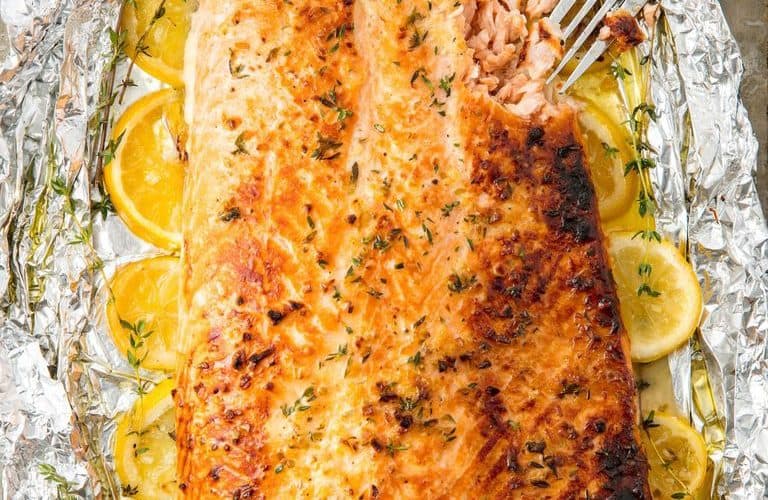Althoug its species vary, salmon, the often brightly colored and abundant fish native to the coastal waters of the North Atlantic and Pacific Oceans, has made great strides in health news. That is attributable to, not only its delicious flavor but, also, its ranking as a protein food particularly rich in heart-healthy omega fatty acids. Consequently, it is readily available in most food markets; and while debate may sometimes arise over wild caught versus farmed, there is no doubt it is one of the healthiest foods one can eat.
In order to do it justice in the kitchen, as a star health and culinary performer, some knowledge of how to bake a salmon is essential. Since baking a whole salmon is not often undertaken, except by experienced chefs, baking salmon fillets is more generally preferred.
Selecting Salmon
When shopping for salmon, there is often a choice of fresh or frozen. If planning to cook it that day, buying fresh is a great option. Either way, it is usually presented fillet style, already boneless and skinned on one side, at least. Since the messiest work precedes presentation or packaging, it is, then, the cook’s turn to take this nutrient rich food to the next level. Should the market have whole or large pieces of fresh fish, offering choice of cut, a safe selection is the center cut, with skin on one side to keep juices in while baking. About six ounces per person is ideal. Now what to do with it?
Preparation for Baking
One of the joys of salmon is that, unlike some types of fish, it tastes great when prepared very simply. As the trick to its succulent flavor lies in not overcooking it, emphasized below, the best way to start out preparing it is, also, the simplest. After that, it is fun to experiment with glazes and marinades for a delightful change. Try “simple” first, though, by following the steps below:
1. Preheat the oven to 350-375 degrees. Ovens vary, so after the first time, it will be easy to be more exact. Keeping close to 350 degrees, though, is generally recommended.
2. Choose the baking vessel. It can be a simple metal baking sheet or very shallow pan, lined with aluminum foil to make clean-up easier. Or, if presentation is important, a glass or oven proof dish may be used. It needn’t be deeper than about two inches.
3. Judging by fish amount, use a little olive oil and lemon juice to lightly coat both sides of fish on pan or in baking dish. Black pepper and garlic powder may be added, to taste, for additional flavor.
Baking Tips
Bake fresh fillets for 10 minutes per inch of thickness, skin-side down. If frozen, an option that will yield an equally tasty outcome, double the time.
Most importantly, observe oven baking time, as over baking threatens tenderness. Generally, the fish will be done when flesh turns opaque, but is still moist throughout. If in doubt, a fork, gently inserted, should cause light flaking.
Bon appetit, and don’t forget, if there is any salmon left over, it is a marvelous addition to the next day’s salad!
Other Ways to Bake Salmon
For a delightful treat, there are packaged marinades to enhance flavor overnight, or numerous blends of spices and herbs to rub on fish prior to oven time. Additionally, sweet fruits, such as pineapple slices, may be placed on baking fish, allowing natural juices to coat it. Glazes may also be drizzled on before baking. A recipe for a popular one, with ginger, as well as some other salmon recipes can be found on the links below.
Prevention: Salmon With Ginger
Real Simple: Salmon Dishes



